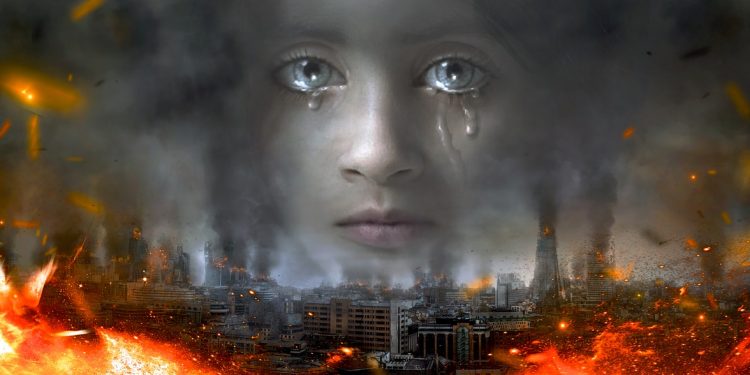Voices around the world are announcing a rapid decay of culture forms and a descent into dystopia. On a grass roots level, much of that decay is driven by the rise of infantile narcissism centered on ‘me and my vulnerabilities’ along with ‘me and my demands,’ a pathological focus that channels its energy into topics like racial or gender-diversity tribalisms.
The force of such tribalism tends to take as prisoner all remaining citizens who don’t identify themselves with the child archetype, creating a two-class society of childlike adults who set out to pull on the heartstrings of more matured, responsible adults within the same society.
The result is a society operating not so much on a division between races, genders, income or sexual orientations, but divided instead by those with a psychological attitude of children vs those with an adult perspective.
Using biological language, what we are witnessing is a hacking of the parental brain of society, garnering its collective sympathies with the bait of dramatized neoteny. When our biological operating system is hacked in this way, and the hack is taught as cultural operating practice within government institutions, universities and in popular culture, there is little way to circumvent its omnipotent demands.
The only way to circumvent the ‘aggressive vulnerability’ of the child archetype is for a portion of society to say NO when faced with its demands, which appear as an insistence for redress of female victimhood, race victimhood, “marginalized” sexuality, and so on — the masks of the child archetype.
Biologists, neurologists, evolutionary psychologists, and ethologists have long recognized parent and child instincts in the form of parents’ urge to caretake and protect juveniles, and conversely of juveniles having an impulse to announce their vulnerability to signal their need to be cared for. This biological fact was independently discovered and understood by archetypal psychologists (parent & child archetypes), object relations psychologists (parent & child objects), and by other schools of psychology dealing with the ‘inner child’ and its need for caretaking. Object relations psychology goes so far as claiming the sexual libido is subservient to the evolutionary imperative of parent~child bonding, making this dyad the strongest motivator in human affairs.
As an interesting point of distinction, Jungians differentiate between the child archetype and what they alternatively refer to as the ‘puer archetype‘ which can be represented respectively by the images of a toddler (child archetype) and an older child/teen (puer archetype). The puer archetype is perfectly represented by the figure of Peter Pan – youthful, loving of new experiences, playful, spontaneous, optimistic, adventurous and independent.
Contrary to the phenomenology of child archetype, the puer archetype is not represented as a small vulnerable child in need of coddling and protecting, he’s an independent child or youth and an archetypal imperative vital to the psychological health of all men and women.
This Jungian differentiation between the motives of infantile child archetype, and youthful puer archetype respectively, is why I reject admonishments of the puer impulse as “Peter Pan syndrome” or as “failure to launch,” which essentially brands men as “pathetic man babies” and shames them into assuming one-sided, and indeed one-dimensional posture of adult responsibility. “Failure to launch” applies more properly to an overidentification with the child archetype, which deserves challenging when it reaches the status of personal or cultural dominance.
While the above video provides only half of the full speech given by Hillman on the child archetype, it does impart a good overview of the topic. Hillman touches there on Jung’s description of the child archetype as including vulnerability, a sense of futurity (that life will begin in the future), innocence, and also a feeling of “hermaphroditism.” This sexual orientation of the child archetype (hermaphroditism) is also confirmed in Freud’s idea that toddlers are “polymorphous perverse” and haven’t yet formed what he understood as an appropriate genital identity.
Perhaps those early observations by Jung and Freud make sense when you consider the concerns of the ‘marginalized’ wokists today who champion multiple genders, non-binarism, bisexuality, transgenderism etc. and aggressively demand to be taken care of.
